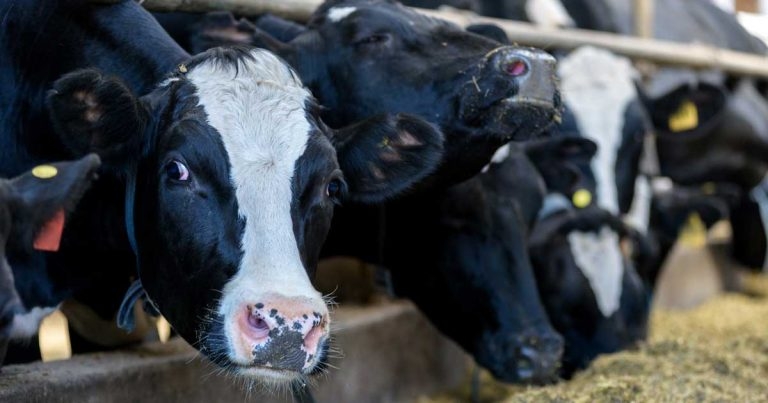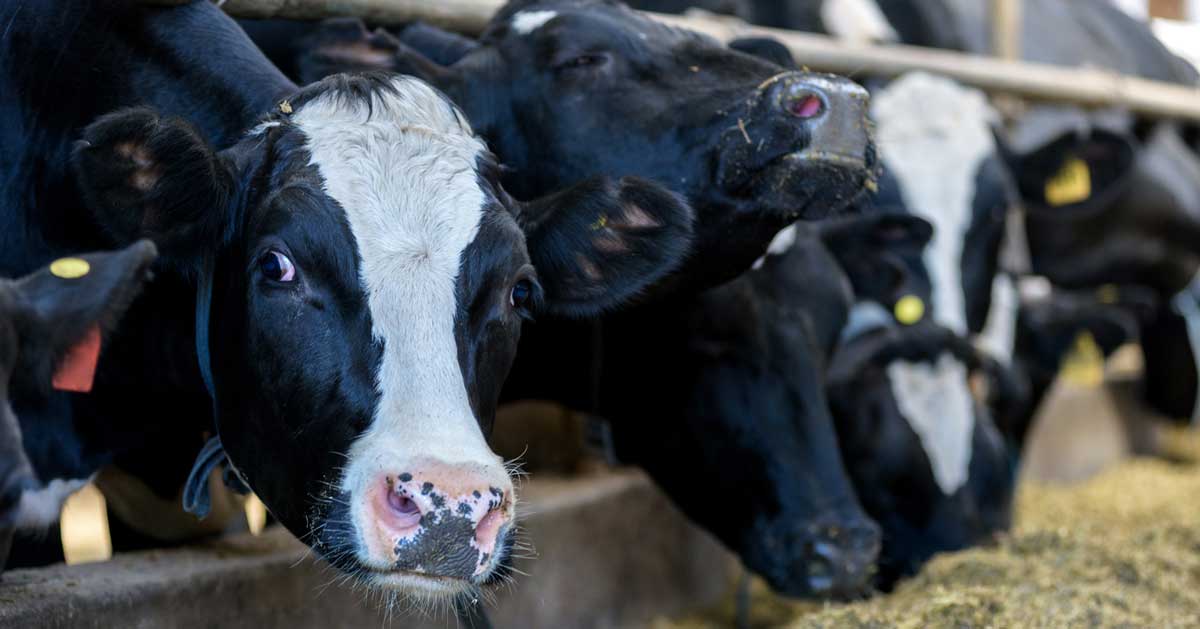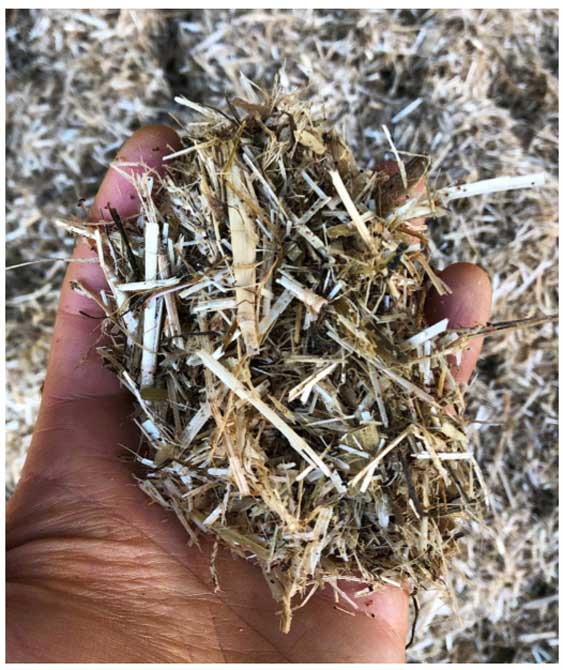17 Feb 2021
With three-quarters of dairy cow diseases occurring in the month immediately postpartum, it is vital cows get balanced nutrition, says Jonathan Hobbs.

Image: © Suslov Denis / Adobe Stock

Good transition management is crucial for establishing a successful, healthy and productive lactation.
Approximately 75% of diseases in dairy cows occur in the first month postpartum, and can be linked to reduced dry matter intake (DMI) two to three weeks prepartum. Therefore, management of the transition period, and reducing negative energy balance (NEB), is of critical importance (LeBlanc et al, 2006).
Getting it right in the periparturient period will reduce the incidence of dystocia, retained fetal membranes (RFMs), metritis, endometritis, ruminal acidosis, ketosis, fatty liver, milk fever and displaced abomasum. Reducing these diseases will significantly increase yields, improve the chances of successfully breeding in a timely fashion again and, ultimately, be more profitable.
Clinical cases of hypocalcaemia, or “milk fever”, are readily identifiable, and their impact in terms of health, welfare and profitability are obvious for all to see. By its nature, however, the effect of subclinical hypocalcaemia is far more insidious, yet just as important, with 20% to 39% of cows experiencing subclinical disease (Houe et al, 2001). More recent work on spring calving herds in New Zealand found a mean herd prevalence of 52% (Roberts and McDougall, 2019), and such subclinical disease has been shown to reduce immune function (Martinez et al, 2014).
Risk factors for developing hypocalcaemia include high body condition score (BCS) at calving, multiparity, Channel Island breeds, reduced DMI around calving and – perhaps most importantly – ingestion of forage high in potassium and nitrogen while low in magnesium, and featuring an overall inappropriate dietary cation-anion difference (DCAD). Calcium homeostasis works best when DCAD is -100mEq/kg to -200mEq/kg of dry matter; however, this is practically very difficult to achieve on most farms due to the potassium content of grass-based forage.
As a result, partial DCAD is usually the norm, with dry cow minerals or calcium binders often used additionally. Magnesium is the most important dietary factor involved in the prevention of hypocalcaemia, however, as all the pathways involved in calcium homeostasis are magnesium dependent, including the activation of vitamin D3, calcium absorption from the gut, and parathyroid hormone and bone calcium mobilisation. Simply increasing dietary magnesium concentration from 0.3% to 0.4% reduces milk fever by approximately 62% (Lean et al, 2006).
An alternative to using a grass-based ration and the traditional bimodal “far off/close up” dry period is the provision of a single controlled energy diet throughout. In practice, this is an ad lib-fed total mixed ration (TMR), where higher-energy feed stuffs – typically maize, but also grass-based conserved forages – are bulked out with low energy forages, often straw. This has the benefit of assisting with DCAD due to the relative mineral contents of the forages provided and their relative concentrations in the TMR – reducing the risk of hypocalcaemia, together with maximising DMI. If this method is used, however, it is imperative the straw is appropriately chopped to provide a fibre length of 2cm to 3cm and mixed fully within the TMR to prevent cows sorting the ration (Figure 1).

Unfortunately, many farms struggle to achieve such a chop length, as commonly the farm machinery is incapable of chopping this small. Handling and storage of chopped straw on windy sites is also particularly problematic, owing to its incredibly light weight, rendering this method impractical.
If either of these cases presents itself then clients should be dissuaded from using such a TMR system to avoid the inevitable sorting of the ration.
Sorting is of concern as it primarily reduces DMI, but it can secondarily increase actual energy intakes as the cows seek out and eat only the “sweeties”. This runs the risk of gaining condition and experiencing the associated problems. As with all TMR diets, they must be presented appropriately to be truly ad lib – feed space must be adequate (together with water, which is often overlooked), the ration needs to be pushed up regularly, and any leftover feed removed and the feed table cleaned before any new food is added.
It is accepted dairy cows in early lactation undergo a period of NEB as a result of the increased energy demands for milk production, which cannot be met through feed intake alone (Drackley, 1999; Herdt, 2000; Roche et al, 2000). This increase in energy requirement coincides with a reduction in DMI of 32.2% during the final three weeks of gestation, with 88.9% of that decline occurring in the final week of gestation (Hayirli et al, 2002).
This increase in metabolic demand, coupled with a decrease in energy supply, is the recipe for a “perfect storm”. However, most cows are able to manage this situation without any apparent complications.
To try to fill this energy gap, lipolysis occurs, with the conversion of triglycerides in adipose tissue to non-esterified fatty acid (NEFA), which then enters the bloodstream where it can be used directly by many peripheral tissues as a source of energy (Herdt, 1988). This provides additional energy to the postpartum cow while conserving glucose for tissues that are glucose dependent, such as the mammary gland.
In excess, however, NEFAs can be toxic and so a significant amount of this circulating NEFA is removed from the bloodstream by the liver, where it has one of four fates: it is either used to produce additional glucose through further gluconeogenesis, converted into ketone bodies – primarily acetoacetate and betahydroxybutyrate (BHB) – through ketogenesis, re-esterified into triglycerides and stored in the liver, or converted to very low-density lipoproteins and exported from the liver.
Ketone bodies can be used as another source of energy, which further compensates for insufficient intake of glucose precursors (Drackley et al, 2001). This process is carefully overseen and regulated by endocrine pathways – the main protagonists being insulin, epinephrine, norepinephrine and growth hormone. It is only when the careful equilibrium is toppled, with excessive NEB resulting, that problems arise.
Excessive NEB results in ketosis, which may be associated with clinical disease, or it may be subclinical, defined as serum BHB equal to or more than 1,000µmol/L to 1,400µmol/L one to three weeks postpartum, depending on the study (Chapinal et al, 2011, 2012; Enjalbert et al, 2001; Geishauser et al, 2001; Walsh et al, 2007), with the incidence of subclinical ketosis ranging from 8% to 80% (Duffield, 2000).
This suggests that subclinical ketosis is a huge problem in dairy cows, but with a range this large, management practices are obviously in play – namely good nutrition and transition cow management – which result in a low incidence on some herds, compared to poor management on other herds resulting in the high incidences recorded.
One such management practice is maximising DMI. While declining DMI is unavoidable in the lead-up to parturition, it is still crucial to maximise it, as DMI at calving is positively correlated with DMI at 21 days postpartum, which will, therefore, help narrow the energy gap.
In addition to ketosis, excessive fat mobilisation and overproduction of NEFA also results in excessive re-esterification of NEFA in the liver to triglycerides. This causes the syndrome of fatty liver, which compounds the effects of NEB by impairing the gluconeogenic ability of hepatocytes, lowering blood glucose further (Grummer, 1993). This results in an increasingly negative feedback loop, with further reduced blood glucose causing even greater lipid mobilisation. Cows with excessive body condition are particularly at risk of this, with the optimum BCS at calving being 2.5 to 3 (1-5 scale).
Control of ketosis and fatty liver, therefore, predominantly relies on the careful management of BCS. This should be addressed well before dry off, ideally from mid to late lactation, where BCS can be adjusted through things such as changing groups to provide a more optimal ration, adjusting amounts of in-parlour feed, changing frequency of milking and so on.
Ultimately, this can only be achieved through regular scoring of cattle and this should be embedded in all dairy herds. Farmers can be appropriately trained to do this themselves, additional to it being undertaken by vets as part of regular herd health visits – or increasingly through the use of vet techs.
Through lipolysis as previously described, body condition is naturally lost, but it is paramount the loss does not exceed a value of 0.5 to avoid deleterious effects on fertility. We are also now acutely aware of the role the fat pad or digital cushion plays in lameness. Not only does BCS loss have significant metabolic and reproductive consequences, it also greatly increases the likelihood of lameness developing.
It has been demonstrated that NEB results in poor oocyte quality and increased rates of anoestrus, through factors including low insulin-like growth factor 1 concentration, attenuation of luteinising hormone pulse frequency and a reduction in oestradiol production by the dominant follicle (Butler, 2003; Wathes et al, 2007).
Elevated NEFA postpartum has been associated with delayed commencement of luteal activity and increased cystic ovarian disease (Jackson et al, 2011). Subclinical ketosis also increases calving to first oestrus, calving to first insemination and calving to pregnancy intervals (Rutherford et al, 2016). Unfortunately, due to the time lag in development of an ovulatory follicle from the early antral stage, excessive NEB at transition will result in cows ovulating poor-quality oocytes right at the end of their voluntary waiting period – just when we want to be serving them.
NEB is also associated with endometritis and a direct reduction in uterine health, through increased inflammation and slower involution (Jackson et al, 2011; Wathes et al, 2007). To summarise – avoid excessive NEB and subclinical ketosis.
Subclinical ketosis can easily be monitored on farm by assessing BHB concentration, either in milk or serum in fresh cows. If done routinely, it is a useful management tool, often alerting the vet and farmer to issues, and allowing appropriate action to be taken to prevent them becoming clinical or spiralling out of control.
Alternatively, BHB assessment can be a useful starting point when investigating problems such as increasing rates of RFM, endometritis, poor milking performance, displaced abomasum, excessive BCS loss in early lactation and so on. However, undertaking a wider metabolic profile in such instances is strongly advised – especially if the cause is not readily identifiable.